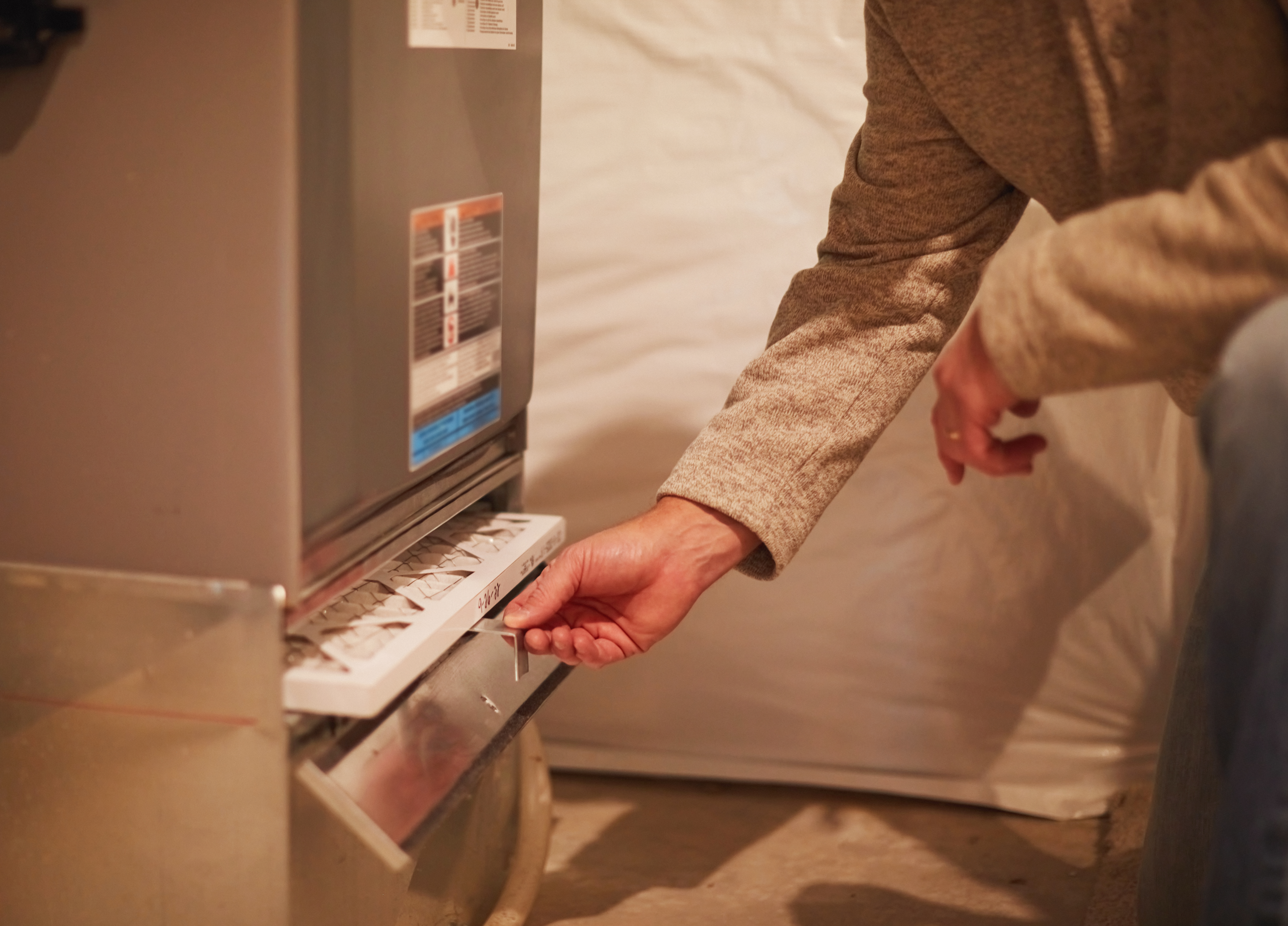If you live in Leander, TX, there’s a good chance your home relies on a gas furnace for heat in the winter. A gas furnace is reliable and efficient, and natural gas is the cheapest home heating fuel source on the market. However, many people don’t give much thought to exactly how a gas furnace works. To remedy that, here’s everything you need to know about how your gas furnace works to heat your home.
All About the Heating Cycle
Mechanically, gas furnaces are simple, and one of the big reasons they’re so reliable. The heating cycle in a gas furnace begins when your home’s thermostat signals the need for heat. Once that happens, your furnace’s incoming gas valve will open, allowing either natural gas or propane to enter the burner, depending on your home’s fuel source. Once the furnace detects a sufficient gas flow in its burners, the electronic ignition system creates a spark that ignites the gas.
The hot combustion gasses then move upwards into your furnace’s heat exchanger. Its role is to transfer the heat from the exhaust gas into your home’s air. To do this, your furnace will activate a large blower fan to draw air in from around your home via its return air duct system. The fan pushes cold air from your home across the outside of your furnace’s heat exchanger. Since heat energy naturally moves from hot substances to colder ones, this allows the air to absorb heat.
As the blower fan continues its work, the now-hot air moves into your home’s ductwork. There, it can travel to the various vents around your home to warm your rooms. As this is happening, the slightly cooler furnace exhaust gasses exit the heat exchanger and leave your home via an exhaust pipe, typically running up through your home’s roof. The cycle then continues until your thermostat tells the system that your home reached the set temperature.
The Major Parts of Your Furnace
Although the combustion process in your furnace isn’t complex, it does require multiple components working in perfect sync to happen safely. Your furnace’s major components include:
Thermostat
Your home’s thermostat is the sensor system that informs your furnace about the conditions inside your home. In most furnace systems, the thermostat will call for heat once the air temperature in your home reaches one degree below your desired temperature.
Furnace Control Board
Located inside your furnace’s indoor unit, the furnace control board’s job is to interpret signals from your thermostat and tell the furnace’s components what to do. It’s the brains of your furnace system. It is also responsible for turning your furnace off if any system faults could compromise your home’s safety.
Gas Valve
The gas valve regulates the pressure of the incoming natural gas supply into your furnace. Its job is to ensure that there’s a regular flow of fuel that neither exceeds nor falls below the furnace’s safe operating range.
Burners
Your furnace’s burners are where the incoming natural gas mixes with a precise amount of oxygen and burns. When working correctly, your furnace’s burners should emit a blue flame, signifying high temperature and near-complete gas combustion.
Ignition System
Modern gas furnaces typically rely on one of two types of ignition systems. One creates an electric spark when required to ignite the incoming gas and oxygen mixture. The other heats a metal heating element through electric resistance until it’s hot enough to ignite the gas and oxygen mixture.
Flame Sensor
Your furnace’s flame sensor has the important job of detecting whether the burners ignite correctly when they should. If not, the flame sensor signals the control board to shut off the flow of gas. It is one of your furnace’s most important safety systems.
Heat Exchanger
Like an automobile radiator, your furnace’s heat exchanger consists of looping tubes inside a shroud of metal fins. The furnace routes hot exhaust gasses through the tubes as cold air passes through the metal fins, heating the air and cooling the exhaust gasses.
Air Filter
The air filter inside your furnace keeps dust and dirt from circulating through your ductwork and into your home. It also keeps dirt out of the furnace heat exchanger. The average furnace filter requires replacement after approximately every three months of use.
Your Trusted Furnace Experts
Since 1984, Quality Cooling & Heating has been the premier furnace service in Leander. We offer complete HVAC installation, repair, and maintenance services. Plus, we offer ductwork services, indoor air quality services, and home energy-saving solutions. As a Better Business Bureau-accredited company with an A+ rating, you can count on nothing but the finest workmanship and customer service from us at all times.
If you need a new furnace or repairs on the one in your Leander home, contact our team at Quality Cooling & Heating today!


